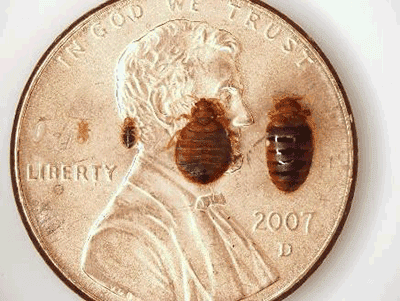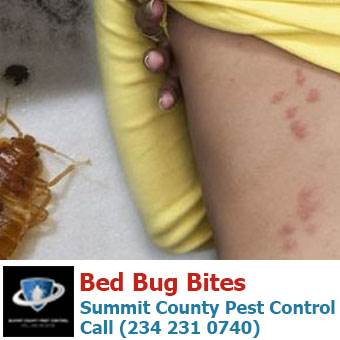Top A1 Bed Bug Treatment in Houston - Quick and Affordable
Wiki Article
Understanding the Lifecycle of Insects for Targeted Control Techniques
Comprehending the lifecycle of bugs is an essential facet of reliable parasite monitoring approaches. By understanding the various stages of development that insects undertake, an extra targeted and specific strategy can be taken on to manage their populations. This knowledge not only clarifies the susceptabilities within the parasite lifecycle yet likewise leads the way for implementing strategic measures that can interrupt their development and recreation cycles. With a deeper understanding of just how parasites progress and flourish, customized control methods can be developed to deal with specific factors in their lifecycle, ultimately leading to even more successful pest monitoring end results.Importance of Comprehending Parasite Lifecycle
Recognizing the lifecycle of insects is vital for establishing effective and targeted control approaches in bug administration. By understanding the different phases a bug goes with from egg to adult, parasite control specialists can identify prone points in the lifecycle where intervention can be most successful.In addition, identifying the specific ecological problems required for every phase of the pest's lifecycle can direct decisions on habitat adjustment or exemption approaches to interrupt the lifecycle and minimize insect populations. This knowledge enables pest administration specialists to execute aggressive procedures rather than depending solely on responsive treatments, resulting in more sustainable and long-term bug control remedies. Eventually, a complete understanding of pest lifecycles encourages parasite control specialists to tailor their techniques successfully, optimizing and lessening environmental impacts control end results.
Secret Phases in Bug Development
To efficiently execute targeted control approaches in pest monitoring, a crucial facet exists in adequately identifying and recognizing the essential phases in bug growth. Bug advancement generally is composed of several key phases that are important for their lifecycle and monitoring.

Vulnerabilities in Parasite Lifecycle
Throughout the various stages of a bug's lifecycle, distinct susceptabilities emerge that can be strategically targeted for efficient control measures. One critical susceptability hinges on the egg stage, where parasites are typically extra susceptible to specific pesticides or organic control agents as a result of their soft outer shell, making them easier targets for treatment. Furthermore, the larval or nymph stage offers susceptabilities as pests undergo rapid growth and growth, calling for high energy usage that can be made use of by interrupting their food resources or presenting development preventions. Pupal phases, identified by stability and transformation, use a home window for targeted control with physical barriers or certain like it therapies that impede successful appearance. Finally, grown-up pests, while more durable because of their reproductive capacity, can still be prone throughout breeding or egg-laying activities, which can be interfered with through pheromone catches or sterilization techniques. Recognizing these susceptabilities in the bug lifecycle is necessary for developing efficient and accurate control methods that successfully take care of parasite populaces while minimizing environmental influence.Carrying Out Targeted Control Measures

Executing targeted control measures commonly involves a multi-faceted approach. This may consist of environment modification to make the atmosphere less congenial to parasites, such as eliminating standing water for insect control or sealing entrance factors for rats. Additionally, organic control approaches can be used, where all-natural predators or virus are introduced to keep bug populaces in check.
Chemical control, such as the cautious application of pesticides, is an additional usual technique. It is essential to make use of these materials carefully to decrease ecological effect and possible damage to non-target species - A1 Bed Bug treatment houston. Integrated Bug Management (IPM) strategies that integrate numerous control procedures in a collaborated and lasting way are frequently one of the most reliable in accomplishing lasting bug administration goals. By applying targeted control steps based upon a complete understanding of go to this website bug lifecycles, insect populations can be effectively controlled while lessening threats to human health and wellness and the environment.
Improved Insect Monitoring Practices

Furthermore, the unification of organic control representatives, such as all-natural killers or pathogens of bugs, can help in reducing dependence on chemical pesticides and advertise a much more well balanced environment. Applying physical barriers and catches can also become part of improved parasite management techniques, providing non-toxic and targeted services for bug control. In addition, using scents and various other semiochemicals can disrupt pest mating patterns and interaction, bring about reduced insect populations gradually.
Verdict
By recognizing essential stages in parasite development and susceptabilities in their lifecycle, targeted control procedures can be implemented to decrease pest populaces. Boosted pest management practices can help minimize the reliance on broad-spectrum pesticides and advertise more sustainable and environmentally pleasant insect control techniques.Comprehending the lifecycle of parasites is necessary for developing reliable and targeted control approaches in parasite monitoring. By comprehending the different stages an insect goes via from egg to grownup, parasite control experts can identify vulnerable points in the lifecycle where intervention can be most effective. Inevitably, an extensive understanding of parasite lifecycles empowers parasite control professionals to tailor their try these out strategies properly, minimizing ecological influences and maximizing control outcomes.
By implementing targeted control steps based on a detailed understanding of pest lifecycles, bug populations can be properly regulated while lessening dangers to human health and the setting.
By identifying crucial stages in bug growth and susceptabilities in their lifecycle, targeted control steps can be executed to lessen pest populations.
Report this wiki page